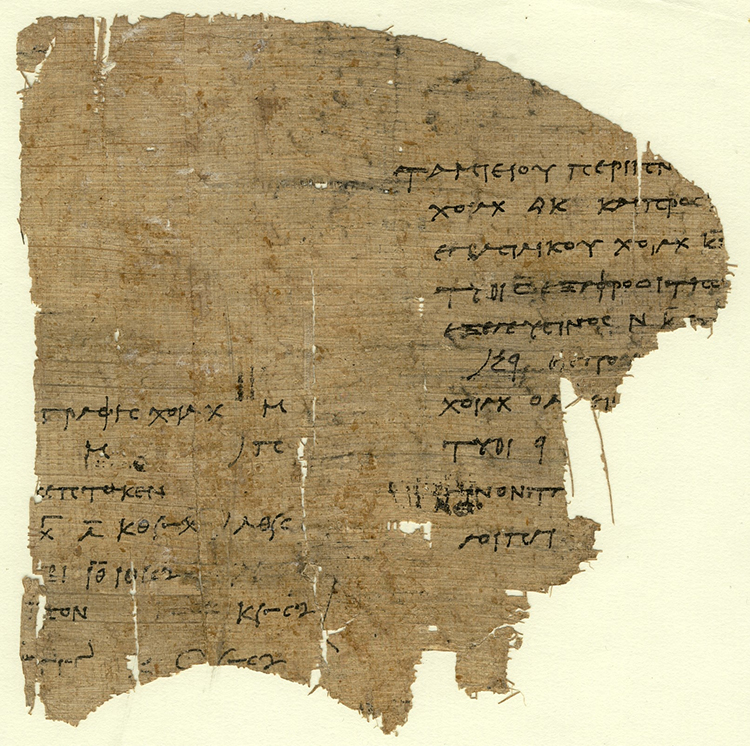G 42359 Recto
G 42359 recto: Dimensions: 13.1 x 13 cm. Date: mid- to late III century BC. Provenance: meris of Polemon, Arsinoites. This dating is suggested by both the palaeography and the fact that in this text all the symbols and abbreviations and the shape of some characters used as figures correspond closely to those found in papyri of the Zenon archive (see P.L.Bat. XXI pp. 557-80 and P.Zen.Pestm. 38 with the index of symbols on p. 291). A slightly later date at the beginning of the second century BC cannot, however, be ruled out entirely. As for the provenance, the nearby villages Aphrodites Polis and Eleusis, mentioned in column II lines 4-5, were both located in the meris of Polemon of the Arsinoite nome, which suggests this administrative region as the provenance of this fragment. This conclusion is confirmed by the place names on the verso. In addition to its fragmentary state of preservation, the fact that no close parallels appear to be available in the papyrological documentation makes the subject of this text difficult to establish. The mention of the basilikon (col. II.3) and the verb peptoken (col. I.3) and the association of this text with G 42359 verso and G 42360 verso, which come from the context of tax-farming, suggest the same context for this text as well. The document is structured chronologically: figures for particular days of the two consecutive months of Choiach and Tybi (Choiach [?] 30th … Tybi 19th; Choiach 23rd [?] … Tybi 4th … Tybi [?] 20th) and for these two months, without specific day dates, follow each other. No other months are mentioned. Within this chronological structure the names of two villages located close to each other, Aphrodites Polis and Eleusis, and perhaps others, are mentioned in the second column. In summary, this papyrus fragment seems to have preserved a part of a tax-farmer’s account (receipts and payments made to the royal bank [?]: peptoken) for the time period of the two consecutive months of Choiach and Tybi. The papyrus was published by C. A. La’da as CPR XXVIII 3.

